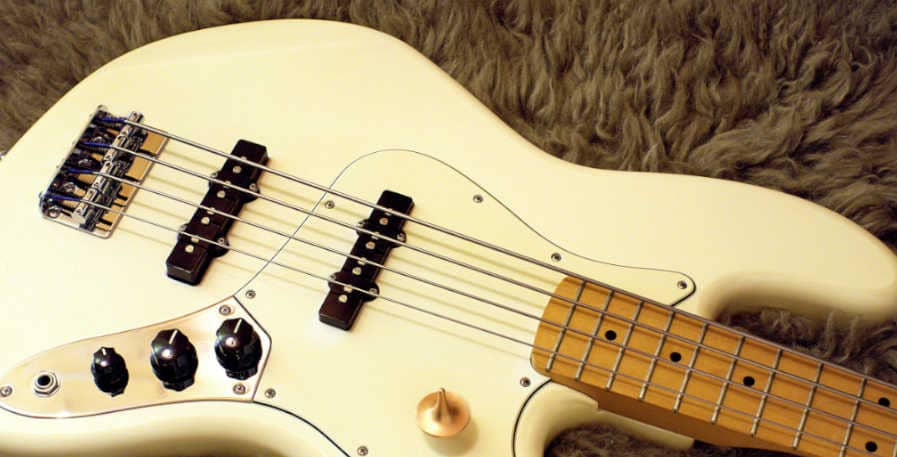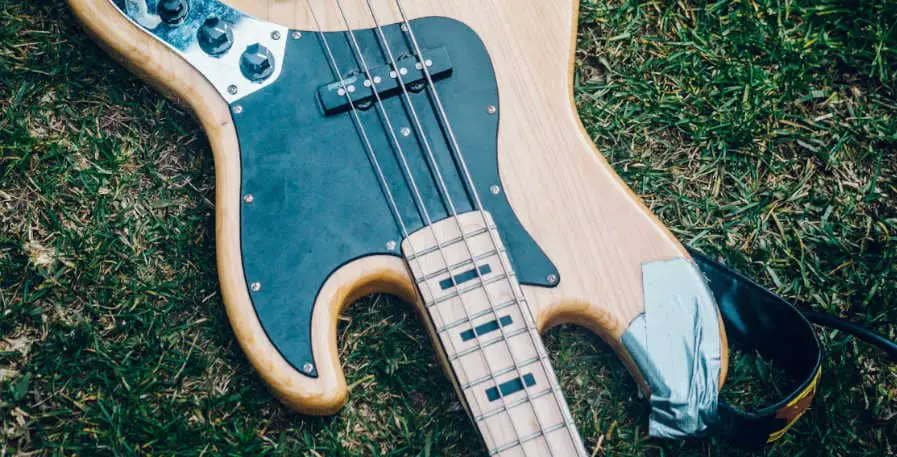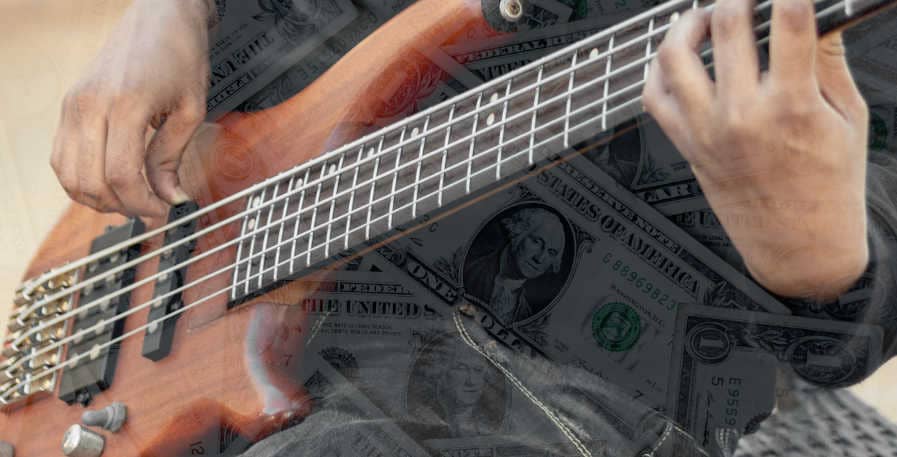Selling a bass guitar is not hard, but I`ve seen countless bassists go about it the wrong.
It`s easy to sell the bass at a store or to list it online. However, knowing where, how and at what price your bass should be sold, can make a world of difference in the final sale.
That`s why I`ve written this guide on how to sell your bass guitar. You will learn how to assess how much your bass is worth, and how to set a reasonable price tag for it. I will also show you the best places to sell your bass.
Further, I will show you how to attract potential buyers that are willing to pay a good price for your bass. Lastly, I will give you some less-known tips that can prevent you from getting scammed, and that will maximize your chances of getting a good price for your instrument.
Where to sell your bass
In general, it is preferable to sell your bass on an online marketplace with a low seller’s fee. This will minimize additional expenses, and ensure that your listing is seen by as many potential buyers as possible.
A Physical store will buy your bass with the intention of reselling it. As a result, they will pay you significantly less than what your bass is actually worth. Therefore, I advise against selling your bass to a reseller, unless your only concern is to get cash in hand immediately.
You can expect a much fairer price on an online marketplace. However, they all have their own pros and cons. The main issue with most comes in the form of expensive fees or lots of unserious offers.
With that said, here are my recommendations for the best places to sell your used bass guitar:

Best online Platforms for selling your bass
1. Reverb
- Pros: Marketplace that specialized in musical equipment. Great platform for getting a fair price for your bass
- Cons: 5% Sellers Fee, fewer potential buyers.
- Monthly visitors: 18 million
While no platform is immune to unserious offers, you are less likely to get them on Reverb. A platform that is centered around musical equipment will always attract more knowledgeable buyers than general marketplaces.
The negative side of specialization is that there will be fewer potential buyers. On the positive side, the platform is incredibly easy to use, and creating an in-depth listing is seamless.
If I were to sell my bass without caring about when it gets sold, I would list it on Reverb. It is unlikely to sell as fast as on my other recommended platforms, but you are more likely to sell it for a better price in the end.
2. Craigslist
- Pros: No seller’s fee. Potential for making more money on your sale overall
- Cons: Scammers and unserious offers
- Monthly visitors: 282 million
Craigslist strikes a good middle ground between cost and potential customer reach. There is no seller’s fee, and your listing will be seen by a lot of potential buyers.
The issue with Craigslist is how chaotic customer interactions can be. You can expect to run into lowball offers, trade offers, and scams when posting a listing.
If I wanted to avoid a seller’s fee at the expense of dealing with unserious offers, I would list my bass on Craigslist. Your bass is likely to sell in a moderate amount of time at a decent price, but it might be an annoying experience to get to that point.
3. eBay
- Pros: Established and trustworthy platform. Massive traffic and lots of potential buyers
- Cons: 3.5% seller’s fee on basses, and some unserious offers
- Monthly visitors: 844 million
In 2017 eBay reduced the seller’s fee for basses and guitars from 10% to 3.5%. This turned the platform into a viable marketplace for selling your bass.
This is great news, as eBay is the best place to list your bass on the web in terms of outreach. A lot of people will see your listing, and if your set price is reasonable you will get offers. However, while not as bad as craigslist, you will get unserious offers on eBay too.
I would sell my bass on eBay if I didn`t mind a listing fee and wanted to reach as many potential buyers as possible. It can be difficult to find a buyer who will pay a fair price, but the sheer size of the platform will increase the chance that you will eventually find one.

How do I sell my bass?
In order to maximize the chance of your bass getting sold it`s preferable to create an in-depth online listing. The listing should include photos of the entire bass from multiple angles in natural lighting. It should also include an in-depth description of the instrument and its condition.
The key here is to grab a potential buyer’s attention and give them as much info about the bass as possible. Here is a list of the essential things you should be doing when selling your bass:
- Put yourself in the shoes of the buyer – If you were to buy a bass second-hand, what would you want to know about the instrument? To me at least, the answer is “everything”. Thus, if you are unsure about what to include when listing your bass, just include everything you can think of.
- Clean the bass – Before anything else, make sure your bass is properly cleaned. There is an endless amount of basses to buy online. If your bass looks less shiny than most competing listings, buyers are going to skip to the next listing without a second thought.
- Photos – There is no such thing as too many photos in a listing. Often times though, there are too few. Ideally, there should be at least 3 different full-body photos from different angles. It`s also a best practice to include some close-ups of the headstock, bridge, pickups, and knobs. Take the photos in natural lighting so that they look clear and more appealing.
- Write a description – What type of brand and what gauge are the strings? Is the bass passive or active, and what type of pickups are mounted on it? What type of wood are the neck and body made out of? Explain what the different knobs on the bass do. Writing a comprehensive description prevents you from having to answer lots of questions from buyers. It also makes your listing more appealing and likely to lead to a sale.
- Explain why you are selling the bass – A buyer might easily think: If this bass is so great, why is it being sold? Now, unless you are trying to scam someone, you probably have a good reason for selling. You might just be getting a new bass, it didn`t fit your style, or you might simply need the money. Regardless, explain in your listing why you are selling the bass so potential buyers won`t assume there is something wrong with it.
- History – It is also a good idea to include what type of journey the bass has been through. Did you buy it new or second-hand? Have you played it actively, or just occasionally? Has the bass been set up for alternate tunings? This is all information that a buyer might want to use to weigh their decision.
- Create a listing – Now that you`ve got all the necessary info and photos ready, use one of the recommended marketplaces above to create a listing. Make sure that it is formatted correctly and looks nice before posting it online.
- Be responsive – After you post a listing, your bass will rarely be bought at the set price outright. A buyer might want additional information about the bass or try to haggle. Even if people try to low-ball you, it`s a good idea to stay professional and be responsive. There is always a chance that they will buy the bass for your set price when you decline their offer. Therefore, it’s a good idea to respond to all messages regarding the bass as fast as possible so buyers don`t lose interest.

What’s a good price for a used bass guitar?
Depending on the model and condition of a bass, it can generally be sold at 65% – 80% of its retail price. High-end basses can be sold at a better margin if they are rare and in demand. Used entry-level basses generally sell for significantly less than their retail value.
Here are 4 key factors that will determine what a reasonable price will look like for a used bass:
- Current market price – The best data for setting a reasonable price for your bass, is what it is currently being sold for. Regardless of how much a bass “should be sold for”, the market will always dictate how much it will actually sell for. Viewing current prices is by far the best thing you can do to set a realistic price tag on your instrument.
- Instrument quality – It goes without saying that a high-end instrument will sell for more than a low-end instrument. What is not as obvious, is that high-end basses generally sell at a better margin than low-quality basses. Depending on the bass, a $5000 ax can be sold at a marginal loss, or even a profit, while a $200 bass will often sell at half of its retail price.
- Condition – If your bass has any marks, scratches, or other types of visible damage, this will decrease its value. Marks that can`t be seen when you are playing, such as on the back of the body, are not as bad as visible marks. Any damage that is visible, or affects the playability of the instrument (such as major scratches on the back of the neck), will decrease the value of the bass more noticeably. Some bassists don`t mind minor damage, while it`s a big deal for others. However, most buyers will expect the damage to be reflected in the cost of a bass guitar.
- Demand – Is the bass you are selling easy to get your hands on? If it is a mass-produced entry-level bass, a buyer can always buy it for $200 from a retailer. Beginner-level bassists often prefer the security of this option over buying it for $150 second-hand. Rickenbacker produces fewer basses than there is demand for. As a result, their basses are more difficult to get your hands on. This also keeps their second-hand cost high. Therefore, you should research how easy it is to get your hands on your bass, and account for it when setting a price.

Tips for selling your bass
Now that you have a good idea of where, and how to sell your bass, let`s get into some additional tips for how to sell it. These are important points that will impact your bottom line that most sellers tend to not think about:
- Patience is value – If you want to, you can sell your bass today by walking down to a music retailer. You would however be offered a horrible price. You could also easily sell your bass online within a week if your price it low enough. Unless you are desperate to sell the bass immediately though, it’s best to not price it as if you were desperate. Not caring how long it takes for your bass to sell is what will ultimately lead to it being sold at a higher price.
- Don`t believe sob stories – When listing your bass online, you might run into someone sending you a message like this: “I have saved for this particular bass for 4 months. I still don`t have enough for your asking price, but this is my dream bass and I would really like to buy it for my birthday this month. Could you be flexible with the price?” These types of messages generally lie. Some buyers of this kind will even relist the bass for the same price as you did right after buying it from you for cheaper.
- Fix damage – If your bass has any damage or is in need of a setup, it is generally profitable to get it fixed yourself. From a buyer’s point of view, they should pay less for a damaged bass. This is both due to its condition and the hassle of having to get it fixed themselves. Your listing will also look better, and adding “newly set up and fixed” into the description is a big plus. This is not a requirement for selling your bass, but it will maximize your profit from a sale.
- List the bass for all skill levels – Do not make the assumption that all buyers know as much about bass guitars as you do. Make your listing just as easy to understand for a beginner as a professional. Avoid terms that beginners might be unfamiliar with, and don`t use the listing to showcase your vocabulary. If a potential buyer feels overwhelmed by the language you are using, they will skip to the next listing.
Conclusion
Selling a bass is all about having a good listing and doing your research.
You will rarely be able to sell a bass with a retail price of $800 for $800. However, a good listing, a patient mindset, and being responsive to customers could be the difference between selling it for $680 and $500.
The details will add up. Every extra photo or additional detail you add to a listing can make the difference for when the right buyer sees it. This can result in your bass being sold both faster and at a higher price.
By using the information above, you can make an informed decision about how you want to go about selling your instrument. If you follow all the tips I`ve given, you can greatly increase your chances of a satisfying final sale. It will take a bit of extra effort, but it can make you a good bit of extra money in the end.
Once you sell your bass it`s time to ship it to the buyer. This can be an arduous task if you go about it the wrong way. Therefore, I`ve written an in-depth on shipping your bass that can help you with this process.

